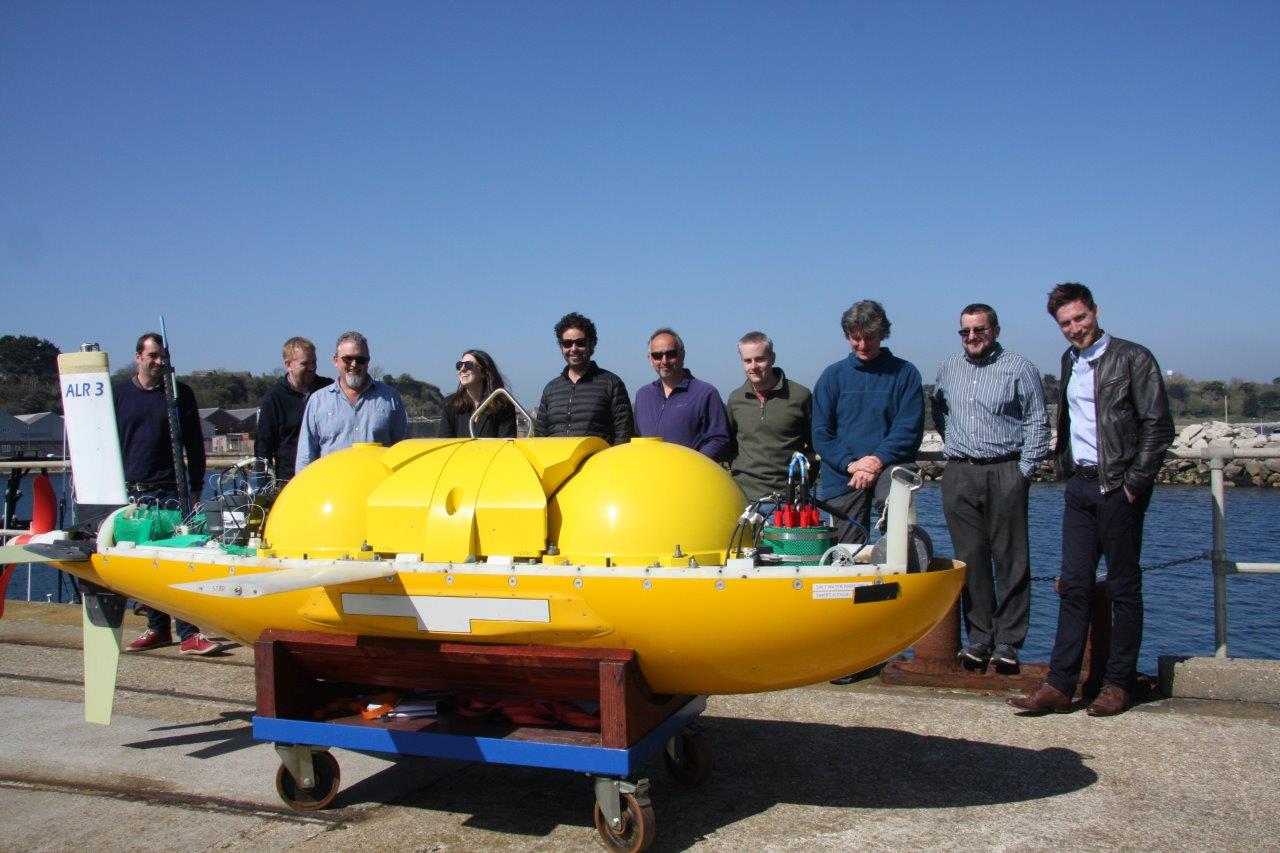Secure retention of CO2 in offshore storage sites will depend on reliable measuring, monitoring and verification (MMV) to ensure that any unplanned releases can be detected. The marine environment also needs to be characterised so that potential changes caused by a release of CO2 can be distinguished from natural variability. The Energy Technologies Institute have supported a £5M project to build and demonstrate a MMV system that can meet the demanding technical and legislative requirements for offshore conditions. A consortium of companies and organisations led by Sonardyne in partnership with Fugro and the UK's National Oceanography Centre, plus associated research contributions from the University of Southampton, Plymouth Marine Laboratory and the British Geological Survey have developed a sensor payload for Autosub Long Range (ALR), a long endurance autonomous underwater vehicle (AUV). ALR, also known as "Boaty McBoatFace", has just completed sea trials off the east coast of the UK in the North Sea. It was towed out from the Yorkshire sea-side town of Bridlington to a test site where it was exposed to a subsea release of CO2.
This AUV and its sensing systems has been optimised for an operational window in marine environments of water depths up to 200m, operating at distances of 25 - 150miles (40 – 240km) from land and being capable of surveying the seabed and the water column across a storage complex in one or two deployments.
It can also operate autonomously for in excess of 10 days which avoids the cost of using an expensive survey ship. The AUV is equipped with an array of physical and chemical sensors together with a state of the art multi-aperture side scan sonar that can detect releases of CO2. The ALR's on-board computer systems provide real-time data analysis and an interpretation capability to enable leaks from CO2 storage sites to be discriminated from other seabed emissions. The suite of physical and chemical sensors can map natural variability in seawater composition and pick out the difference between natural variability and non-biological driven changes that might indicate a leak. The multi-aperture side scan sonar runs an automated target recognition (ATR) algorithm in real time on the sonar data and has been shown to distinguish between a CO2 plume and other features such as a shoal of fish or a ship's wake.
The offshore sea trials, led by Fugro, involved towing the ALR 12km off the coast of Bridlington. CO2 was deliberately released, supplied by a bank of cylinders placed on the sea floor and two different survey patterns were conducted: a Wide Area Survey (WAS) over a large area to demonstrate baseline survey; and a Fine Area Survey (FAS) covering 500m x 150m box within the immediate vicinity of the release point. The ALR travelled around 400km during the demonstration with a coverage of some 60km2. This North Sea demonstration has shown that that the ALR can be controlled and tracked along a predetermined survey path, being operated from shore (from Southampton) over a period of days with no support vessel on-site, all of the sensor and operational data being communicated back to shore using satellite communications to secure servers. This data was then made available on the Internet using Fugro's METIS package, showing chemical heat maps, AUV tracks, sonar detections and sonar imagery.
The project has also tested static lander systems that are deployed to the sea floor and can record physical and chemical parameters within their immediate vicinity. These systems can be deployed near sites such as well heads where potential leakage could occur. These have used Sonardyne underwater acoustic communications to transfer data to a surface asset and onwards to the Internet via satellite communications.
The conclusions that can be drawn from the chemical detection system on ALR and landers demonstrate that:
• This state-of-the-art chemical and sonar sensor system on both the landers and the ALR have demonstrated good performance and reliability.
• The lander with chemical sensors has been shown to be effective in detecting small leaks from nearby targets.
• The automatic target recognition algorithm for the multi-aperture side scan sonar was successful in detecting small leaks in real time.
• Chemical sensors mounted in a moving vehicle can be an effective tool where CO2 is released in the dissolved phase and for larger leaks.
